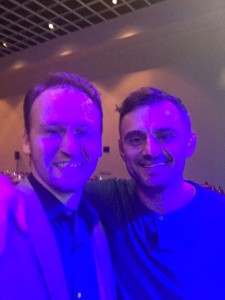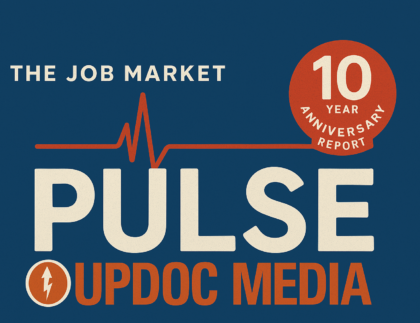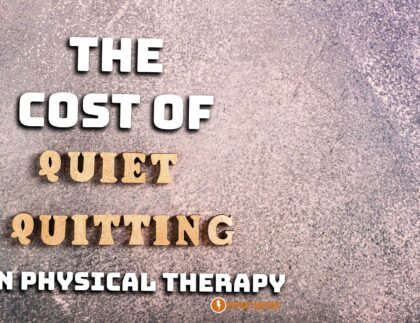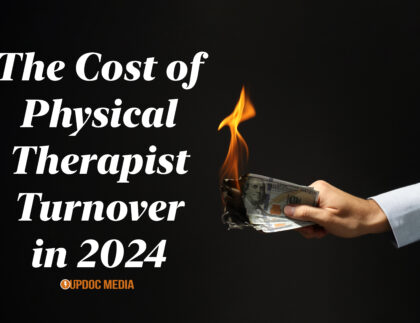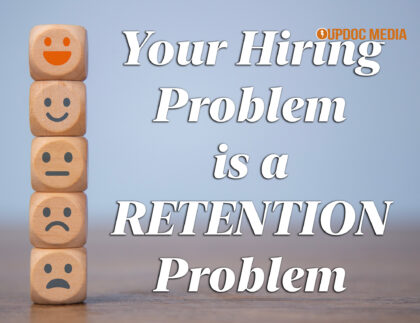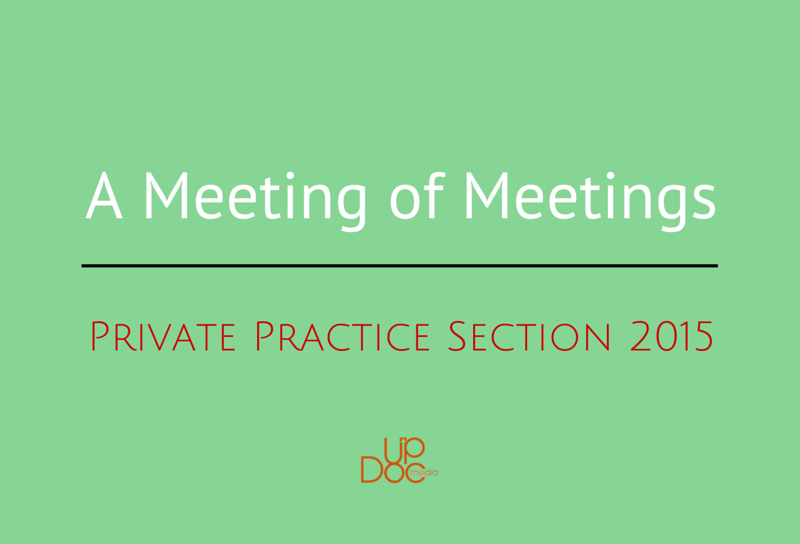
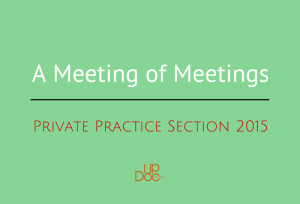
I recently returned from PPS 2015 and thoughts are flying faster in my brain than F-bombs out of Gary Vaynerchuck mouth during a keynote presentation (which is faaaast…). Speaking of Gary, he did in fact open the festivities with an excellent keynote. For those of you who don’t know who Gary Vaynerchuck (Gary Vee more commonly), you either don’t partake in social media or live under the internet rock, either way not good. Gary is the CEO of Vayner Media, author of best selling marketing books and an investor. He knows a thing, or two, about marketing. His message for the physical therapy community was simple, get your head out of your ass in regards to how you sell and market the profession. Stop trying to optimize what was and start working on what will be. This was summarized with his line “your business needs to be a media company first then a ….”. No arguments from me on that.
Speaking of marketing, the second keynote speaker, Daniel Pink (a Therapy Insiders podcast guest), discussed selling. Yes I know, selling is a dirty word for a lot of people. Mostly due to the image it conjures. As Dan mentioned in his keynote, that when they took a survey on what images selling brought about, guess what it was? Close your eyes after reading this sentence and picture a salesman. Ok, hopefully you opened your eyes again. You probably pictured a man, in a shitty suit getting ready to sell you an even shittier car. If you are a used car salesman please do not send me angry emails. Even better for those already emailing me crappy car deals… please stop those! That is the image we have when we hear selling, no wonder most physical therapists shy away from it. In reality, however, selling is a necessary, vital part of any business—especially physical therapy. Why physical therapy? Because people don’t have a clue what physical therapists do! Seriously.
One of my UpDoc Media partners, Joe Palmer, walked around with me during the conference asking strangers three simple questions. 1. When I say physical therapy what do you think of? 2. When I say chiropractor what do you think of? 3. How old are you? Want to know the answers? Good, they will be on an upcoming Therapy Insiders podcast (we also recorded their answers). The answers were not good, for either profession. Why is it so hard to create a unified message, at least a several good similar messages that penetrate the public conciseness? Why? Because we over think, undersell and compete too much within ourselves.
Speaking of competition, I recently read a really good book called Zero to One by Peter Thiel (co-founder of PayPal and Palantir). In an earlier chapter, Peter discusses competition and why its not necessarily a good thing. The following sentence really stuck with me:
“Rivalry causes us to overemphasize old opportunities and slavishly copy what has worked in the past.” — Peter Thiel
Let that process for a minute. Can you see how that sentence relates to the physical therapy profession? We compete with other professions, we compete with other clinics, we compete with each other in the same clinic! FOR WHAT? More patients? As far as I know more than 85% of people that could benefit from physical therapy don’t have a clue we exist for their problem. We are competing to optimize old opportunities; competing for a foothold in an already outdated model.
We are competing for the best horse when we should be drawing up plans for spaceships.
Speaking of plans, some of you may be thinking “great thoughts, very idealistic but not realistic…” To some extent you would be thinking correctly (and thus, making me an awesome mind reader). I’ve been called many things, but idealistic is not typically one of them. Don’t get my wrong, I see idealistic scenarios; but, that’s usually where it stops. An idea without actionable and realistic proposition for exception is useless.
As the title of this post (essay? crazy ramble??) suggests, PPS is a meeting held together by a foundation of many, many smaller meetings. Yes, a lot of people go for the sessions to learn. But a majority go to meet with (potential) clients, to develop business relationships and to improve their business via a connection. I’m a bit unique to some extent (easy now). Since I run a media company, have spoken to a bunch of people already via Therapy Insiders or maybe just have a trustworthy face, people talk to me. More specifically, they answer questions. Aside from my own super secret meetings (cue suspense music in your head), I got to chat with very interesting people. Let’s frame this before going further.
Some of these people have companies with a lot of clinics, some have hundreds of employees, some with cool tech products, some single practice owners. Through out my conversation I would ask all of them one unifying question: “What are your business’ pain points?” Their answers were shocking similar regardless of the size of the company. I was a bit taken aback once I processed it all. The two biggest pain points that almost everyone shares are: 1. Quality employee retention and recruitment, and, 2. Competition of xyz. EVERYONE had at least one of those pain points and most had both.
Speaking of pain points, congratulations on getting to the end of this post! Well done, I’m proud of you. At some point during his keynote, Gary Vee said to a room of several hundred business owners:
“…7-15 of you will understand what I’m talking about…”
Initially, I thought he was being a bit dramatic, sensational, possibly dehydrated. As I met with more and more people I started to realize he was spot on. We attend these meetings for confirmation that we are doing better than someone else, or to learn how someone else is doing something better than us. We don’t take a step back and realize most of us are doing it wrong, even worse we can’t see how wrong it is.
Fear avoidance, risk aversion and delusions of success are crippling the future of physical therapy. Daniel Pink described his three new principals of selling being: A: attenuation, B: buoyancy, and C: clarity during the conference. If we start attenuating meaning understanding what someone thinks instead of always focusing on how they feel (empathy), it may drive logical decision instead of emotional ones. If we accept that rejection will happen, a lot, and that’s ok — we will be buoyant until we succeed. And if we truly understand the problem, OUR problem, as a profession we will find clarity in the answer for a solution.
Do you agree, disagree or somewhere in between? What are you thoughts? Let me know on twitter (@therapyinsiders) and in the comments below.
 |
Dr. Gene Shirokobrod
Co-founder, UpDoc Media |
